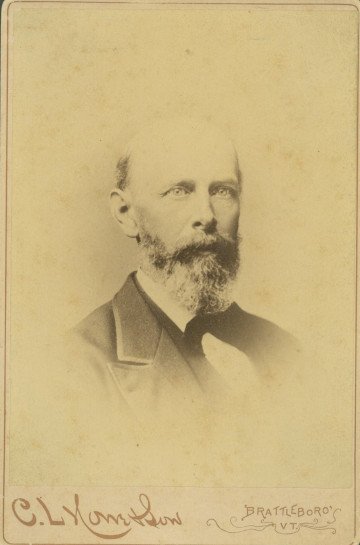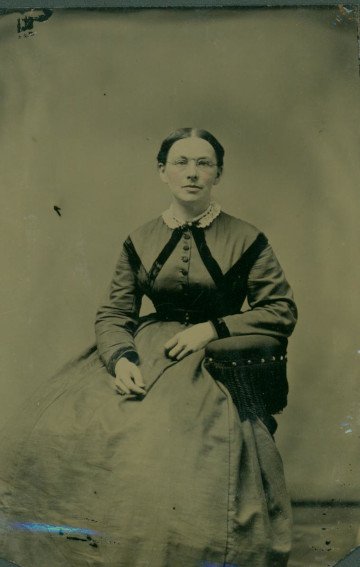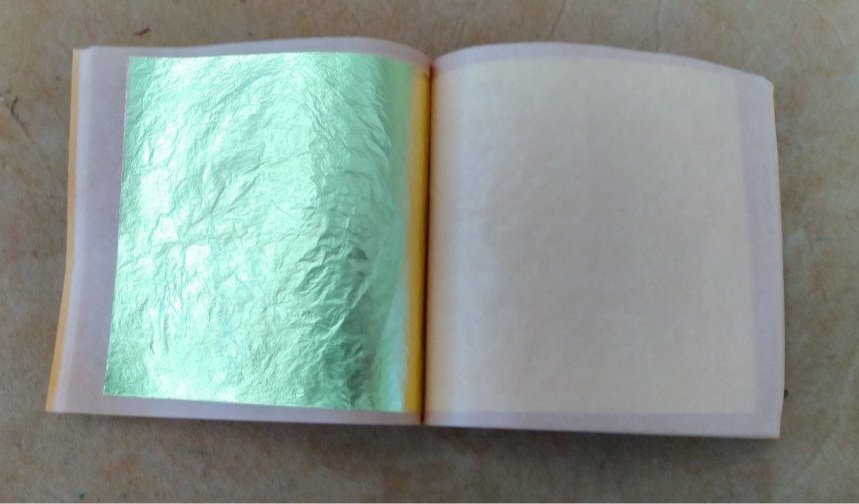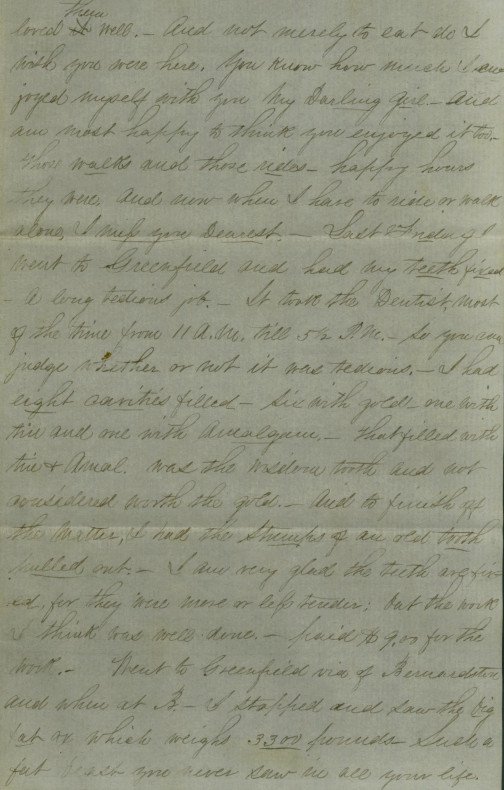
By Heather Harrington, Associate Librarian
On September 16, 1860, Edward Wells Colton (called Wells) of Northfield, Massachusetts, wrote the following to his fiancée Susan Heard, in Boston:
“Last Friday I went to Greenfield and had my teeth fixed. A long tedious job. It took the Dentist most of the time from 11 A.M. till 5 ½ P.M. So you can judge whether or not it was tedious. I had eight cavities filled—Six with gold—one with tin and one with Amalgam. That filled with tin & Amal. was the wisdom tooth and not considered worth the gold. And to finish off the Matter, I had the Stumps of an old tooth pulled out. I am very glad the teeth are fixed, for they were more or less tender; but the work I think was well done. Paid $9.00 for the work.” [1]
This short paragraph describing Wells’s trip to the dentist reveals a lot about mid-19th-century dentistry and about Wells himself.

Dentistry emerged as a specialty and separate field of medicine in the 19th century, and it is around mid-century that innovations in the field, such as anesthesia, became standard. In Wells’s description, he only mentions it being tedious to have the dentist work on his teeth for more than six hours in one day. He does not mention feeling pain. This suggests that Wells received some kind of anesthetic. Dr. John Gould, a dentist in Worcester County during this same decade, mentions ether gas in his account books.[2] It is likely this was the same gas used on Wells.
Of the eight fillings Wells received, six of them were gold. By gold, Wells probably meant gold leaf. The tin and amalgam[3] were the cheaper option. Dr. Gould recorded in his account book the cost of gold leaf: ¼ oz. cost $10.50 in 1869, while 1 oz. of amalgam cost $2.50.[4] That Wells could afford to spend more for gold leaf indicates his economic status.

Wells was the youngest son of Richard and Betsy Colton. He had trained as a civil engineer and worked as a teacher. In 1860, he was twenty-nine years old, engaged, and expecting to start a prosperous life as an engineer/farmer in the West. In September, he was waiting to hear about a job on the railroad, or a job teaching. He was making plans to visit Missouri and begin a new life there. In the meantime, he was working on the family farm with his twin brother, Edwin Williams Colton (called Williams or Bill). In the same letter to his fiancée, he discusses the various widths of the cravats he received from his tailor. Clearly, he was a man who cared about his appearance, and getting his teeth filled with gold leaf was another way of showing this.
Wells lists the cost of the eight fillings and one extraction as $9.00. An inflation calculator found that $9.00 in 1860 would equal $263.12 in 2020 money. Getting eight fillings today would certainly cost more than $263. Wells evidently got a good deal for his money. The fact that Wells had $9.00 to spend on his teeth also indicates that he had the money to spare for the dental work, and that he could afford six fillings with gold leaf, instead of all amalgam. He also could have chosen to fill only one or two teeth during his visit and pay a smaller price.
Getting his teeth filled was perhaps something that gave Wells confidence and made him feel ready for his upcoming marriage and hoped-for successful life in the West. While Wells and his fiancée did get married in August of 1861, he did not end up moving West. The start of the Civil War in April 1861 and the death of his brother Williams in 1862 put an end to his plans. Instead, he stayed on the family farm in Northfield and took over his father’s place, both on the farm and in society. Perhaps in later years he returned to the same dentist for more gold-filled teeth. If nothing else, he had a golden smile.

[1] Edward Colton to Susan Heard, 16 September 1860, Colton Family Papers, Box 10, Folder 71, Historic Deerfield Library.
[2] A Boston dentist first used ether gas as an inhalation anesthetic in 1846. https://www.ncbi.nlm.nih.gov/pmc/articles/PMC4608178/
[3] Amalgam usually consists of half liquid mercury, and half a powered alloy of silver, tin, and copper. Modern fillings today also contain mercury. https://www.fda.gov/medical-devices/dental-devices/dental-amalgam-fillings#mercury
[4] John Gould account book, 1869, Historic Deerfield Library. An inflation calculator puts the cost of ¼ oz. of gold leaf in 2020 money at $207.15. The amalgam would be $49.32.